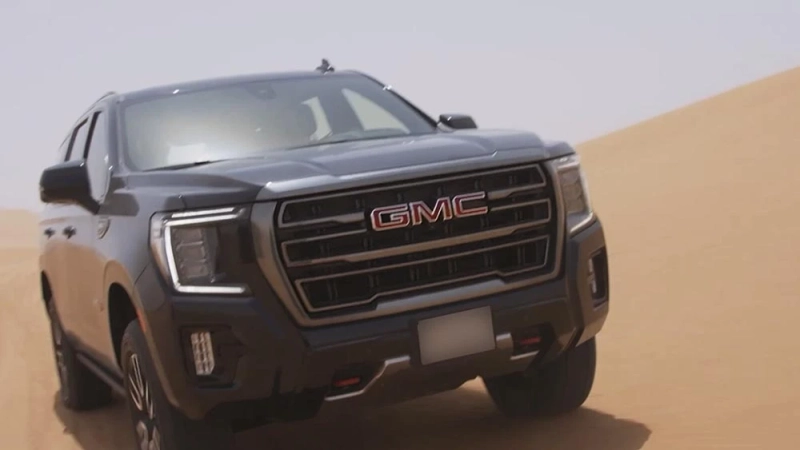Are you a videographer or filmmaker looking to break into the world of automotive video production? Shooting cinematic car videos can be a challenging yet rewarding endeavor. From capturing the sleek lines and powerful engines to showcasing the vehicle in motion, there's an art to creating visually stunning and emotionally resonant car videos. In this article, we'll explore tips and techniques to help you elevate your car video production skills as a beginner.
Tell a Story Before you start rolling the cameras, it's crucial to have a clear narrative in mind. Car videos shouldn't just be a showcase of the vehicle's features; they should evoke emotions and transport the viewer on a journey. Craft a compelling story that resonates with your target audience, whether it's highlighting the thrill of performance driving, the elegance of a luxury sedan, or the ruggedness of an off-road adventure.Plan Your Shots Proper planning is key to capturing cinematic footage. Create a shot list that outlines the various angles, perspectives, and camera movements you want to incorporate. Consider using a combination of wide shots to establish the environment, medium shots to showcase the car's exterior, and close-ups to highlight intricate details. Plan your shots around the car's lines, curves, and unique features to accentuate its design.Choose the Right Locations Location scouting is essential for creating visually captivating car videos. Look for locations that complement the vehicle's character and the story you're trying to tell. Urban environments with interesting architecture, winding mountain roads, or picturesque natural landscapes can all serve as stunning backdrops. Additionally, consider shooting during the golden hours (shortly after sunrise or before sunset) when the warm, soft light can add depth and drama to your shots.Utilize Camera Movement Static shots can be effective, but incorporating camera movement can take your car videos to the next level. Experiment with techniques like dolly shots, where the camera moves parallel to the car, or tracking shots, where the camera follows the vehicle in motion. You can also use a camera stabilizer or gimbal to achieve smooth, cinematic pans and tilts.Play with Angles Don't be afraid to get creative with your camera angles. Low angles can make the car appear more imposing and powerful, while high angles can provide a sense of scale and grandeur. Shoot through windows or reflective surfaces to add depth and intrigue to your shots. Additionally, consider using drone footage to capture stunning aerial perspectives or to follow the car from above.Lighting is Key Proper lighting can make or break a car video. While natural light can be beautiful, it's essential to understand how to shape and control it. Use reflectors or bounce boards to fill in shadows and add dimension to the car's surfaces. Additionally, consider incorporating artificial lighting, such as LED panels or continuous lights, to accentuate specific features or create dramatic lighting effects.Pay Attention to Sound Sound is often an overlooked aspect of car videos, but it can significantly enhance the viewer's experience. Capture the visceral roar of the engine, the purr of the exhaust, and the sound of tires gripping the road. Additionally, consider incorporating ambient sounds from the surrounding environment or a complementary soundtrack to set the mood and reinforce the narrative.Edit with Purpose In the editing room, you have the power to shape the story and create a cohesive, cinematic experience. Pace the footage to build tension and anticipation, and use transitions and color grading to establish a consistent visual style. Pay attention to the rhythm and flow of the edit, and don't be afraid to experiment with creative techniques like slow motion, time-lapses, or even stop-motion animations.Focus on Details Car enthusiasts appreciate the finer details, so make sure to capture close-ups of the vehicle's intricate elements, such as the emblem, interior stitching, or intricate engine components. These details can add depth and character to your video, and showcase the craftsmanship and attention to detail that went into the car's design.Collaborate with the Client Finally, remember that automotive video production is often a collaborative effort between the videographer and the client (whether it's a car manufacturer, dealership, or private owner). Maintain open communication throughout the process, understand their vision and objectives, and be willing to incorporate their feedback to create a final product that meets their expectations.Shooting cinematic car videos as a beginner can be a challenging but incredibly rewarding experience. By following these tips and techniques, you'll be well on your way to creating visually stunning and emotionally engaging automotive content. Remember, practice, experimentation, and a passion for storytelling are key to mastering this craft. So, grab your camera, hit the road, and start capturing the beauty and power of the automotive world.


